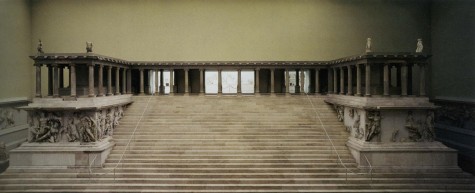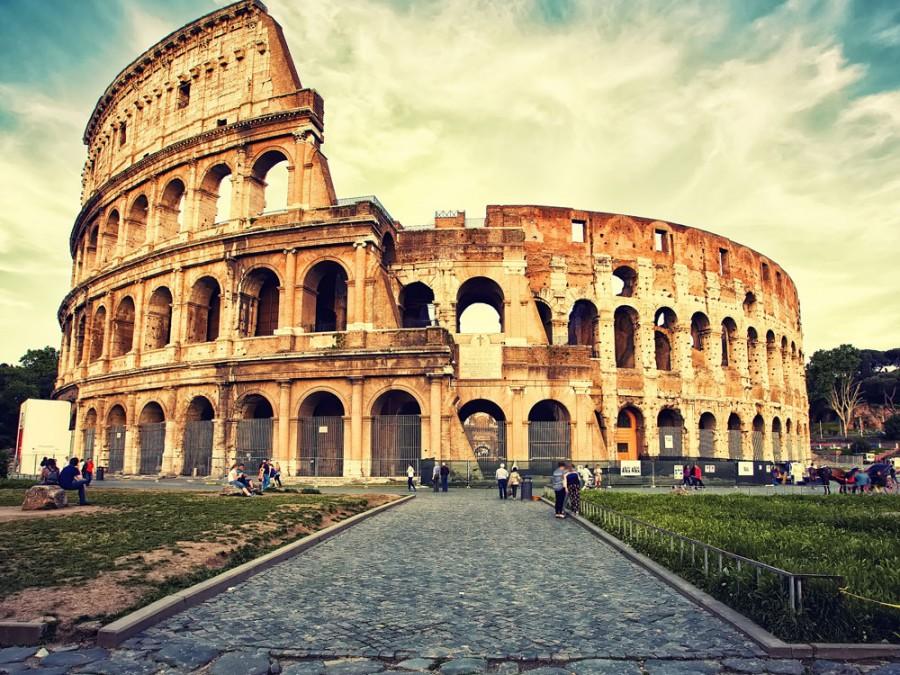Outstanding AP Art History Essay Submissions
The essays are talking about this artwork: 
By Carrie Bean
This frieze takes place on the left side of the tomb while facing it. This tomb originally was the first people saw when walking up the steps to the acropolis; These steps were on the other side of where the pathway led up the to the temple of Athena. This is carved marble relief that depicts Zeus and Athena (plus other Gods battling giants. Snake like figures are shown wrapping around their bodies, but it also shows Zeus breaking free from these giants. As commonly seen, the male figure is nude with idealized features to show off the strength. The females are clothed, and we see Athena in full movement to show her strength in the battle. During the time this relief was carved the Greeks were in battle with the Persians, the symbolization of the God/Goddess are the Greeks and the giants and the giants are to be the Persians. While the Persians had destroyed many parts of Greece, the Greeks wanted to represent themselves to show they would not be defeated.
This scene was placed where people could recognize the achievements of the Greeks during battle, and specifically was placed on the Great Altar of Zeus, for Zeus. The Greeks commonly made art around their beliefs and achievements. They were especially made to also represent their Gods/Goddess’s to give their thanks for the help they received to defeat. Specific pieces, like this one, are put high up on the acropolis so that it can be closer to the Gods rather than in the agora. The Acropolis is a place of social gathering and ceremonies so this scene of their achievement is something to celebrate.
By Carrie Bean
Both the Colosseum and The Pantheon represent the Romans use for building round symmetrical buildings. The colosseum uses all three columns from the different time periods; the first floor is Ionic, the second floor is Doric, and the third floor is Corinthian. The Pantheon has Roman’s original Tuscan columns, but is mostly a closed in a closed in building made of concrete with an oculus to let light in. The Colosseum is an open space with no roof top. The Colosseum’s purpose was a place for social gatherings and entertainment for the Romans. Inside was an area, which is a place to battle and the sand will soak up the blood of the victims. Surround the arena were the seats for the Romans to watch. The Pantheon was another social place, but for meetings and a place of worship. These two structures represent opposite sides of the Romans. They had their religious ceremonies for the God’s and were holding up a government for Rome. On the other hand the Romans also like to represent their strength and used slaves and other soldiers for entertainment and victory upon those who battle.I think the Colosseum is more representative of the Romans. Each floor symbolizes not only different time periods but also the difference in social classes. Romans were in constant battle to fight for their republic and so their use of battle in the Arena stands for a lot. The Colosseum also stood in a large city where more and more people joined together. The Colosseum is the form of domestic life where more than a certain group of people can come together.
By John Pomerening
The Great Altar of Zeus at Pergamon of depicts the Gods battling the titans. The piece is an excellent example of Hellenistic art. The figures are extremely expressive: The Gods are portrayed heroically conquering the Titans whereas the Titans express great fear and appear to be writhing in pain. Additionally, the figures are placed extremely close and with their bodies twisting and moving with high intensity. To enhance the detail, the artist used deep carving to pronounce the shadows of the figure, giving the pieces more realism. The specific scene of Athena Battling Alkyoneos shows her as she is about to behead Alkyoneos. These pieces represent Greek military victories over their enemies, and the overall grandiosity of the piece is meant to be a direct expression of wealth and power. However, during this time,the great empire of Alexander the great had fallen apart, so the chaotic nature depicted is a reflection of the internal state of Greece.
Athena Battling Alkyoneos, placement along the frieze gives the image prominence to the viewer. In addition, the scene is supposed to recall Greek military victories. Coupled with the extravagance of the overall monument, this scenes placement is supposed to show and give a sense of jingoistic might. Although, The Great Altar was built during a time of internal chaos. Artistic works from the Hellenistic have extremely expressive designs that move with great definition. The refore to the more trained eye, the chaotic scene on the frieze is representative of the warfare undergoing inside the empire.
By John Pomerening
Both pieces are made with the utmost engineering precision: using concrete to achieve sizes and volumes previously impossible. While both pieces have a circular footprint, The Colosseum forms an arenabowl, that is stacked with four tiers of alternating styles of columns. The Pantheon, has a massive dome structure which is made using coffers that lessen the weight as well as different mixtures of concrete. In addition, upon entering one would see the intersection of the dome and the wall: Vertical and horizontal. The Colosseum was used for gladiator battles while The Pantheon was used to worship the Gods. However, they are both pieces of public work payed for by the empire.
Both pieces represent the extravagance and ego of the empire. The engineering precision needed is at such a high level that the knowledge needed to build The Pantheon was lost. Such high levels of design yet intellect was what the Romans valued most; which directly shows itself in their architecture. The Colosseum unlike The Pantheon was used to garner public support. Also The Colosseum was used for gladiator battles whereas The Pantheon was used to celebrate the Gods. I think the Colosseum is more representative of the empire. It is perhaps the most recognizable building in history and its usage of bloodsport shows off the visceral desires of the Romans.






